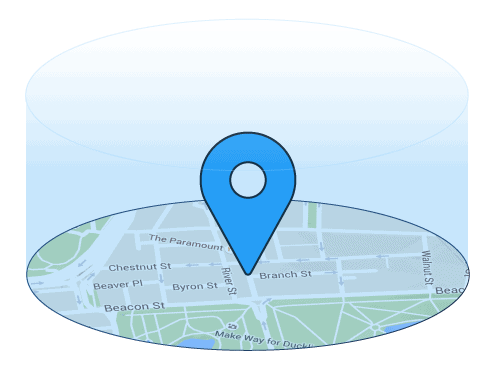Did you know that the location-based services market is expected to reach $3.8 billion by 2018? I’m talking about the kinds of push notifications that people get on their phone or other mobile devices when they’re in a particular area. Such notifications might include alerts about a sale as you’re walking by your favorite store or all sorts of other useful information. Imagine, for example, landing at an airport in a new city and instantly receiving notifications about the best hotels there or the top tourist attractions.
Location-based messaging is becoming an increasingly popular and effective way of reaching people with timely and relevant information. What makes it so powerful is the fact that since most people are tethered to their devices around the clock, they’re effectively a captive audience. Yet if you’re a mobile marketer looking to take advantage of this trend to engage your audience and make your apps more effective, there are a variety of factors that you need to carefully consider. Chief among them is which technology — geofences or beacons — is best suited to help bring your strategy to life.
Geofences vs. Beacons: Two Paths to Location-Based Messaging

Not that long ago when a company wanted to do location-based messaging, it would simply email the people in its database, tailoring its messages to whatever extent was possible based on the recipient’s ZIP code. And while that technically counted as location-based messaging, it wasn’t very effective. You couldn’t do it real time or in response to your audience’s actions.
Fast forward to present day and we’ve got much better options.
The first is to use beacons — small devices that will detect your mobile phone or tablet when you come into close proximity with them. A beacon will then send a signal to a server, which in turn sends a push notification or in-app message to your device. The advantage of using beacons is that they’re incredibly accurate and work really well indoors. As such, they’re good for use in stores, where customers can get different notifications as they wander from one part of a store to another. The downside of using beacons, however, is that they can be difficult to deploy, particularly when you’re trying to do so across lot of locations.
The second option mobile marketers have for enabling location-based messaging is to use geofencing. A geofence is a virtual fence that you place around a specific location. That location could be very small (such as a single store) or incredibly big (such as an entire city). Most often, however, geofences get placed around specific buildings or other points of interest. In fact, among other things, they’re ideal for use in situations like that airport scenario I mentioned earlier.
Geofences vs. Beacons: What’s Better for Mobile Marketers?
While beacons and geofences both have their place, the fact is that when it comes to mobile marketing geofencing is typically the better way to go. Let me explain why.
Geofences have a number of advantages over beacons. For example, when you use them, all of the gelocation work gets done by your end user’s phone, meaning that you don’t need any hardware. That makes deployment a much easier proposition since it can usually be handled on the back end. Not only that, geofencing can also give you access to the rich analytics you need to ensure the success of your mobile marketing efforts.

Here’s an example of what I mean. Let’s pretend that you’ve got a bunch of billboards plastered all over town. Normally, you’d have no real way of knowing how well they are or aren’t working. But if you had geofences around each of those billboards, it’d be a different story. Not only could you measure how many users came in close enough contact with them for the billboards to be seen, you could also determine if they were leading people to take a desired action. Imagine the billboard’s call to action was to perform a specific task on your company’s app. With geofencing, you could measure how many people actually performed that task after seeing your billboard.
Armed with insights like these, you’d be much better positioned to optimize future billboards to get better results. And while this is just one example, hopefully it helps you start to envision some of the many other ways in which you can use geofencing to enhance and personalize your marketing.
The Bottom Line
If you’re a mobile marketer, you need to be thinking about how you can use location to better communicate with and engage your users. As location-based messaging becomes increasingly popular, it’s important that you have the right groundwork and infrastructure in place to take advantage of this growing trend. That starts with weighing the pros and cons of geofences vs. beacons.
Going forward, you and your apps need to be able to interact with people in more interesting and engaging ways. Taking advantage of location data is the next natural step in that evolution.
Interested in learning more about location based marketing?
Our CTO Henry breaks it down in Hot Topics With Henry:
